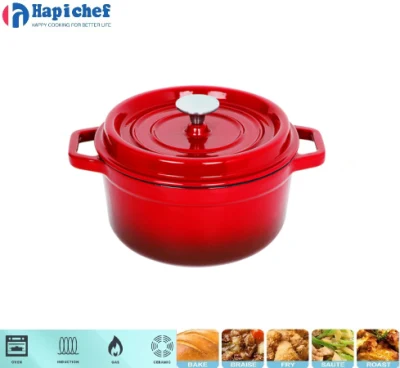frying pan
As kitchens around the world continue to evolve, the frying pan remains a staple piece of culinary equipment. Whether you are a budding chef or a seasoned culinary artist, the relevance of a high-quality frying pan cannot be overstated. Its ability to evenly distribute heat, robust construction, and versatility make it indispensable for a variety of cooking techniques, from sautéing vegetables to searing meats.

Selecting the ideal frying pan encompasses several considerations. Material choice plays a crucial role in this decision-making process. Cast iron frying pans, for instance, are celebrated for their superior heat retention, making them perfect for slow-cooking and deep-searing tasks. A well-seasoned cast iron pan also adds a unique depth of flavor and built-in non-stick properties, enhancing the overall culinary experience. However, their heavy weight and requirement for regular seasoning might be a drawback for some users.
On the other hand, stainless steel frying pans offer unparalleled durability and resistance to warping, making them suitable for high-heat cooking. These pans are favored in professional kitchens due to their rapid response to temperature changes, allowing chefs to control cooking processes with precision. However, they typically require a little more culinary expertise to prevent sticking and achieve the perfect sear without fat residue.

Aluminum frying pans, often found with a non-stick coating, provide an excellent choice for everyday cooks seeking ease and convenience. Lightweight and efficient heat conductors, they excel at preparing delicate foods such as eggs or pancakes. Despite their convenience, care must be taken to avoid damaging the non-stick surface with metal utensils or high cooking temperatures.
frying pan
In terms of craftsmanship, the importance of a well-constructed handle should never be underestimated. A comfortable, heat-resistant handle ensures safety and ease during cooking, preventing accidents and facilitating effortless maneuvering. Ergonomic designs are particularly important when the pan is destined for frequent use or complex cooking tasks.
Beyond material and construction, consider the size and depth of the pan. A deep frying pan with a larger surface area accommodates family-sized meals and diverse culinary techniques, while a smaller pan is ideal for quick, single-serve dishes. Induction compatibility is another growing consideration, as more households switch to energy-efficient cooking methods.
For those committed to maximizing the lifespan and utility of their frying pan, proper care is essential. Avoiding sudden temperature changes, using appropriate utensils, and following manufacturer recommendations for cleaning can prevent premature wear and maintain performance. The ever-evolving market also offers specialized cleaners and accessories that further aid in prolonging the pan’s operational life.
Investing in a high-quality frying pan isn't just about acquiring a kitchen tool; it's about enriching your cooking journey with equipment that instills confidence and extends your culinary capabilities. By understanding the distinct qualities and maintenance requirements, you ensure that the frying pan remains an asset that enhances both everyday meals and gourmet creations alike.
-
Why Ecast Iron Grills Are Heating Up Outdoor CookingNewsMay.23,2025
-
Why Cast Iron Cookware Belongs in Every Kitchen?NewsMay.23,2025
-
Why Cast Iron Bakeware Is a Timeless Kitchen EssentialNewsMay.23,2025
-
Upgrade Your Kitchen with Cast Iron Bakeware SetsNewsMay.23,2025
-
Master Outdoor Cooking with the Camping Dutch OvenNewsMay.23,2025
-
Casserole Cast Iron Cookware for Rich, Slow-Cooked FlavorNewsMay.23,2025
-
The Ultimate Guide to Cast Iron Deep Dish Pizza PerfectionNewsMay.21,2025
